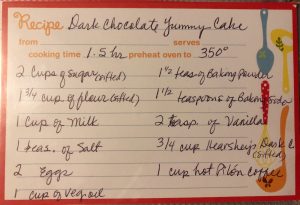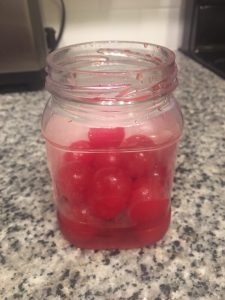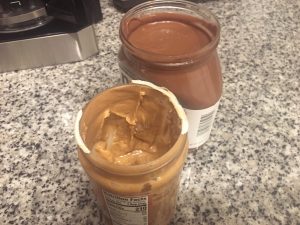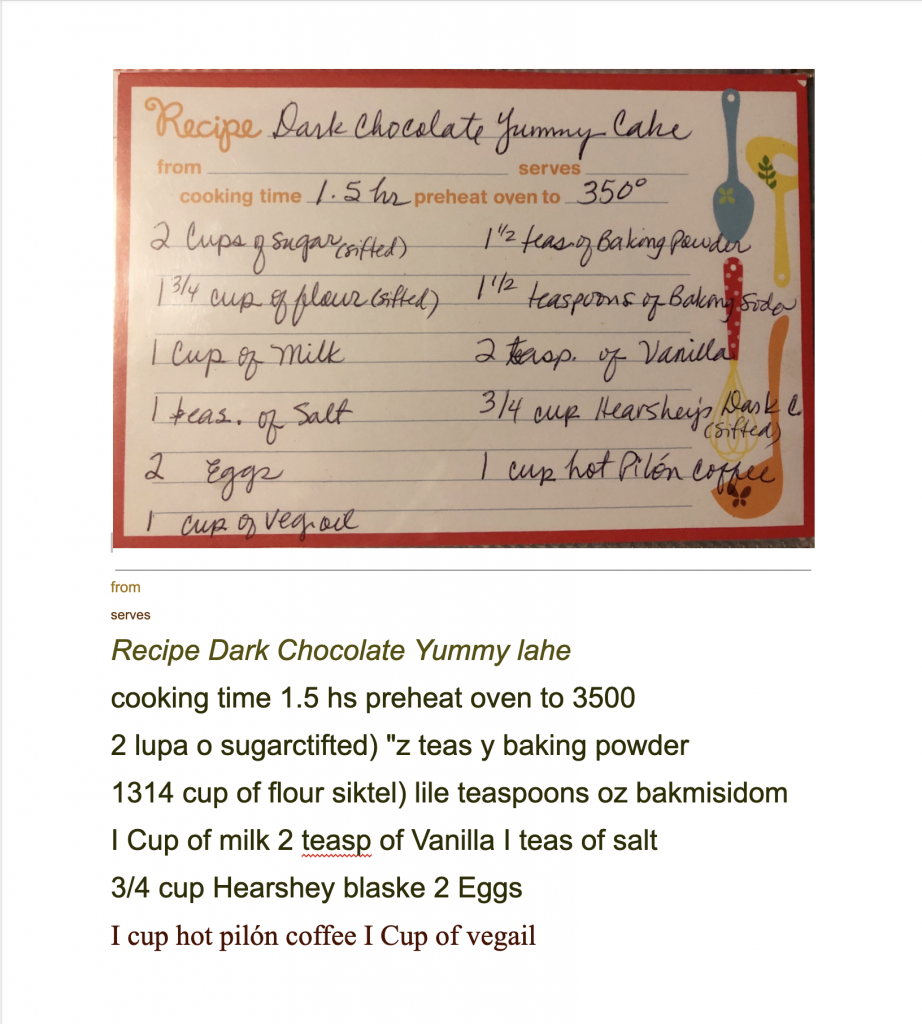A Guide to Digitization: My Modern Kitchen
This activity, which entailed creating a thematically-focused collection of images, was my first attempt in getting acquainted with the step-by-step process of digitization through an exercise involving personal kitchen items. Manoff (2006) points to this need to explore the nature of digital materiality in order to understand how knowledge is being shaped, which is exactly what the Digitizing my Kitchen experiment has helped me accomplished.
I will start this post with the conclusion of this process, which responds to three questions that were carried throughout this activity, which are: What can I capture, and not capture, when I digitize something? Which forms of digitization make the most sense for different types of items? To what extent does working with digitized representations impact how we understand different kinds of items, and/or our ability to use them for different purposes?
In trying to understand how effective my images were at invoking memory, I find that those items containing more aspects like smell, size, color, sound, weight, are the best ones for viewers to make use of inference to recognize them. Images like “Maraschino Cherries in a Jar”, and “Peanut Butter and Hazelnut Spreads in Jars” are by far the most effective in providing the largest amount texture elements for viewers to identify with. If I were to retake photographs of the other images (like the ice cubes or the recipe card), it would have tried to incorporate more elements or other objects in the picture to help provide a scale for viewers. The image “Orange Industrial Step Stool” attempted to do that. Perhaps include a ruler, like archeologists or forensic scientists, or a U.S. quarter, like sellers showcasing their products on e-commerce platforms, such as eBay or Etsy.
I can see how the creation of images is so popular among scholars, for as Terras asserts, “as the majority of items being digitised are documents, photographs, artworks, or objects which require a simple, two dimensional digital surrogate to be created before anything more sophisticated can be achieved computationally.” (p2) And if I were to do this part of the exercise again and with more time, I would have included a picture of an apple pie with cuts at the top and liquids dripping out, which might be more likely to invoke a smell, or maybe a drippy hamburger patty, which may appear more flavorful. I would have also had an object next to it to help the viewer get a better idea of the pie scale.
Videographic Images
While single images of an object might offer a minimum amount of data to recognize, media capable of generating 3D or 4D models could produce a more complete surrounding view of an object. In all three instances of my videorecording, all re-presentations offer a much greater inference potential for viewers, as this media provides them with more access points for object recognition, and possibly more avenues for understanding the item.
In the case of the video footages I produced, these do a more descent job showcasing textures, colors, and volumes of items, especially those with significant volumetric values. Let’s take for instance, “Peanut Butter and Hazelnut Spreads in Jars”, a video that shows the size of containers in relation to each other and to the clothes pin I decided to lay next to them (for viewers to infer about scale). The creaminess of both products, as well as the shine produced by them as I moved the camera, can be an indication of the richness and (possible) yumminess of both spreads. One can infer about the taste if one has had exposure to these two products, of course. But if the viewer has not had contact with these products, a video could aid in making inferences.
The video that perhaps rated way better than its instant counterpart, was the footage of “Dessert Recipe Card”. For an object that doesn’t provide volumetric information, like a paper card, a video of it captured the following inferences: its depth as a flat object (in relation to clothes pin and recipe binder), and the fact that it is part of a compilation of recipes bound by a recipe binder with protective sleeves/pockets. Video can potentialize the viewer with a perspectivistic perception of the object it captures.
Ok, now with the guidelines I followed for digitizing my kitchen, which helped me better address the inquiries aforementioned.
Guidelines to Digitizing My Kitchen Project
By following a guideline provided by our professor, I learned a great deal about the importance of: (1) understanding the diversity of physical attributes of an object, (2) visualizing my digitalization process as an uniform and predictable exercise, (3) figuring out what is worth digitizing (and what is not), (4) setting expectations for myself, and of course (5) valuing my project. Terras well-stated the following regarding the importance of following guidelines for these endeavors: “Digitisation guidelines, whether practical, managerial, or technical in nature, are the first point of reference for those about to undertake a digitisation project, and there is no need, nowadays, for a project to establish every detail themselves.” (p6) My guidelines did provide me with the criteria needed to make the proper selection of items to digitize, to name and describe each one, to create adequate re-presentations (image or video), and to reflect upon the process itself.
Selecting, naming, uploading, and describing the items:
For the purposes of this exercise, I was to capture images of five modern kitchen objects in my possession, including: at least one item that contains text, and objects of different characteristics (i.e. containers with ingredients and consumables). I selected the following objects to capture:
Item 1: Dessert Recipe Card

Item 2: Crescent-Shaped Ice Cubes

Item 3: Maraschino Cherries in a Jar

Item 4: Orange Industrial Step Stool

Item 5: Peanut Butter and Hazelnut Spreads in Jars

I used a naming convention that would be generic enough to be recognized by most viewers and to provide with some space for interpretation, but descriptive enough that will speak to the specificity and/or functionality of the item. In some cases, In some cases, modified the noun by adding adjectives alluding to the nature of the item being described, its color, its shape, and its texture.
The next step of this activity was to upload the images of each one of these items onto to the HIST 680 learning platform (hosted by Reclaim Hosting), and to assess the accuracy of the image when providing potential viewers the information needed to infer about them.
Assessing the accuracy of the images:
In order to make this assessment , our professor offered us a checklist to complete, and a scale that would indicate the extent to which each image informs viewers about its features, including: size, weight, shapes, sides, color, smell, and taste.
Here’s the chart that was generated after inputing my assessment for each image I captured:
|
Table 1. Assessment on how each image accurately captured each item
Making this assessment helped me reflect on how these images, as a collective, can provide with adequate information for viewers to make inference. Those images of items that possess the largest number of elements, like the maraschino cherries in the jar, and the peanut butter and hazelnut spreads in jars, were the most effective in presenting the item. Images with items that offer no volumetric information, say the dessert recipe card, were the least effective in offering information to viewers.
The next phase in understanding the digitization process with the use of these basic kitchen items, was to capture some of these by video.
Capturing items videographically:
Our instructions were to select three of the items captured by camera that would represent a range of effectiveness: one that the camera captured accurately, one that was captured somewhat accurately, and one that the camera captured ineffectively. The idea through this exercise is to compare both modes of representing an object.
I took very short videos of the following three items:
Video 2: Maraschino Cherries in a Jar
Video 3: Dessert Recipe Card
After uploading each video, I then assessed the accuracy of each one, in terms of the degree to which it provided potential viewers with enough information for them to make inferences. Here’s the chart that was generated based on the same criteria/scaled used for the image captures.
|
Making use of OCR software to make machine-readable text from photo containing text:
